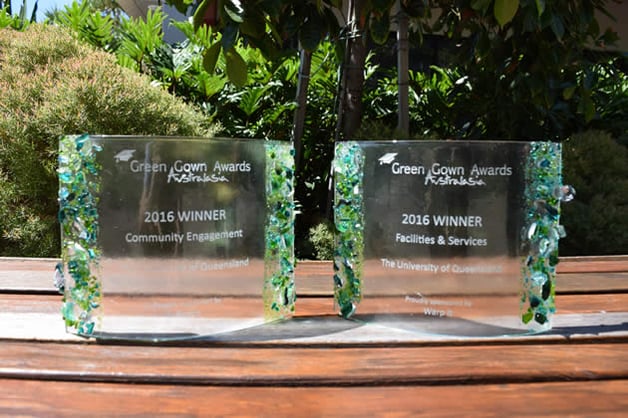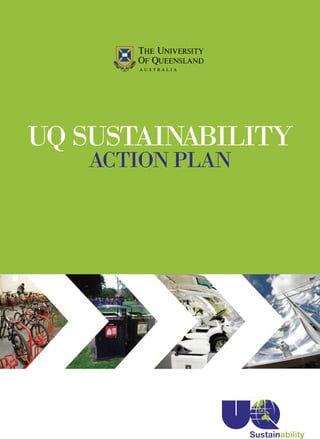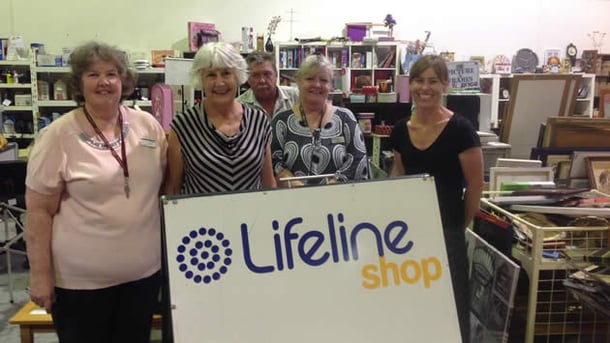Warp It are pleased to welcome Christine McCallum from the University of Queensland to discuss sustainability and the introduction of the Warp It reuse program.
In this interview we talk about:
- Moving from an email to an online based reuse system or reuse program
- How to get support from across the board before roll out
- How to deliver a pilot with the right number of stakeholders
Hi Christine, would you be able to start right from the beginning and tell our readers how your journey started?
We have a second-hand furniture store here on our main campus, which is managed by a dedicated staff member. Staff can visit the store every Thursday to view and claim second-hand furniture. Before Warp It, staff used the store in a fairly ad hoc way, since there was no formal system to support and facilitate furniture reuse. We also found that staff were discarding any old unwanted furniture at the store, as there was no control over what could or could not be kept there, and as a consequence it was always very full and disorganised.
Due to the lack of a formal system, as well as a disorganised storage space and staff time pressures, the university often had to dispose of good-quality reusable furniture simply because a new owner couldn’t be found quickly and easily. A resource-exchange email had been set up to combat this problem, but had limited reach, and had lost its impetus by the time I became aware of it.

The University of Queensland has been doubly recognised for its sustainability initiatives at last year's Green Gown Awards,
How did this lead you into looking for a reuse portal?
When I came across Warp It, I thought it could be very useful, because we were already considering an online system for furniture exchange. Warp It was very appealing to us, since it was developed for universities, councils and large estates. We also knew that alternative online reuse systems wouldn’t be as effective for an organisation such as UQ due to the absence of controls and the lack of data capture.
With the store that opened on Thursdays, who were you selling to?
There were no sales—staff could just come down and view or claim second-hand furniture. Everything was free, but if it was claimed, it had to be used for work purposes only.
Can you tell us about the email system that your IT team set up?
In order to increase furniture reuse at the university, an ITS staff member set up a resource-exchange email list. This system was initially quite successful, but, it did have limited reach among UQ staff and limited capacity.

How did you get Warp It approved?
I initially spoke to the initiator of the resource-exchange email about Warp It, and he was very supportive of the idea, because he could see its potential. I also spoke with UQ’s cleaning manager and decanting manager, and they were also both very keen. The next step was to write up a business case and obtain approval from the director of the Property and Facilities Division. Everyone within Property and Facilities was very keen to see Warp It implemented, so there were no roadblocks at all.
What does the decanting manager do, and is that a common role in Australia?
I’m not sure if it’s a common role. The decanting manager is responsible for relocating staff, students and physical resources from one building to another for the duration of physical works on campus. Fortunately, our decanting manager is really keen to see things get reused, which is largely a consequence of him witnessing wastage in his role!
So you started with a trial, how did that go?
Initially I organised a stakeholder group meeting that included the decanting manager, the second-hand furniture store manager, the cleaning manager, the resource-exchange email initiator and four or five other staff members who had been very active in furniture reuse over time, including financial officers and building/ facilities managers.
All the stakeholders were very enthusiastic about Warp It, and provided a lot of useful feedback at the initial stakeholder meeting.

It's all in the strategy. UQ's Sustainability Action Plan.
Did you involve procurement in your stakeholder group?
Yes. We had a mini trial that involved financial officers and other stakeholders. This allowed us to consider if extra controls (such as checkboxes and notifications) were required.
Interesting, we often recommend a list of 10 different roles that could or should be present at the initial meetings. Is this too many do you think?
I would keep the initial meetings very brief and let the stakeholders experience the portal before asking for their feedback. But I still do think it’s important to include stakeholders who occupy different roles in the organisation in the implementation process.
There’s a balance to be found then. Do you have to jump through a lot of hoops to make change do you feel?
No, I think everyone involved in setting up Warp It at UQ was very positive and supportive. Initially, some members of the stakeholder group were uncomfortable with the idea that any staff member could claim items without some type of prior approval from their managers or financial delegates. So we did need to work together and compromise to get an end result that everyone was happy with.
Can you tell us about the launch?
We went live and advertised to all staff in our weekly staff newsletter. We had around 10 staff members sign up on the first day, and then realised that we were not going to be overwhelmed with thousands of registrations all at once! But registrations have been steadily increasing since the initial ‘go live’ date.

Savings made since joining Warp-it to January 2018. For up to date savings see here.
Christine, if you had a time machine and could go back and do it differently, how would you approach it?
I wouldn’t ask for stakeholder feedback until they’d become familiar with the system. Instead, I’d just get the mini trial up and running and then choose key stakeholders to provide feedback once the trial was complete. Having too many stakeholders involved too early in the process slowed us down.
How has Warp It helped you in your job role?
It shows that the Sustainability Office is serious about promoting and enabling reuse. It gives us real information on reuse which is a great thing to promote across the campus. I really want to get charities on board next, and am currently working on that. We've got all the legal approvals in place now, so it's just a matter of getting the charities involved.

Christine (Far Right) has been involved with reuse and charitable donations for a long time and will be looking to maximise this via Warp It.
Wow! What a great insight into an on campus online reuse system. Well, it looks like you’re well prepared for the future and using Warp It as it is intended. Great stuff and thank you for your time Christine. Good luck!
It is important to tell your story in order that others can be inspired or helped out. If you would like us to tell your story- whether you are a Warp It customer or not... get in touch by clicking the image below.









